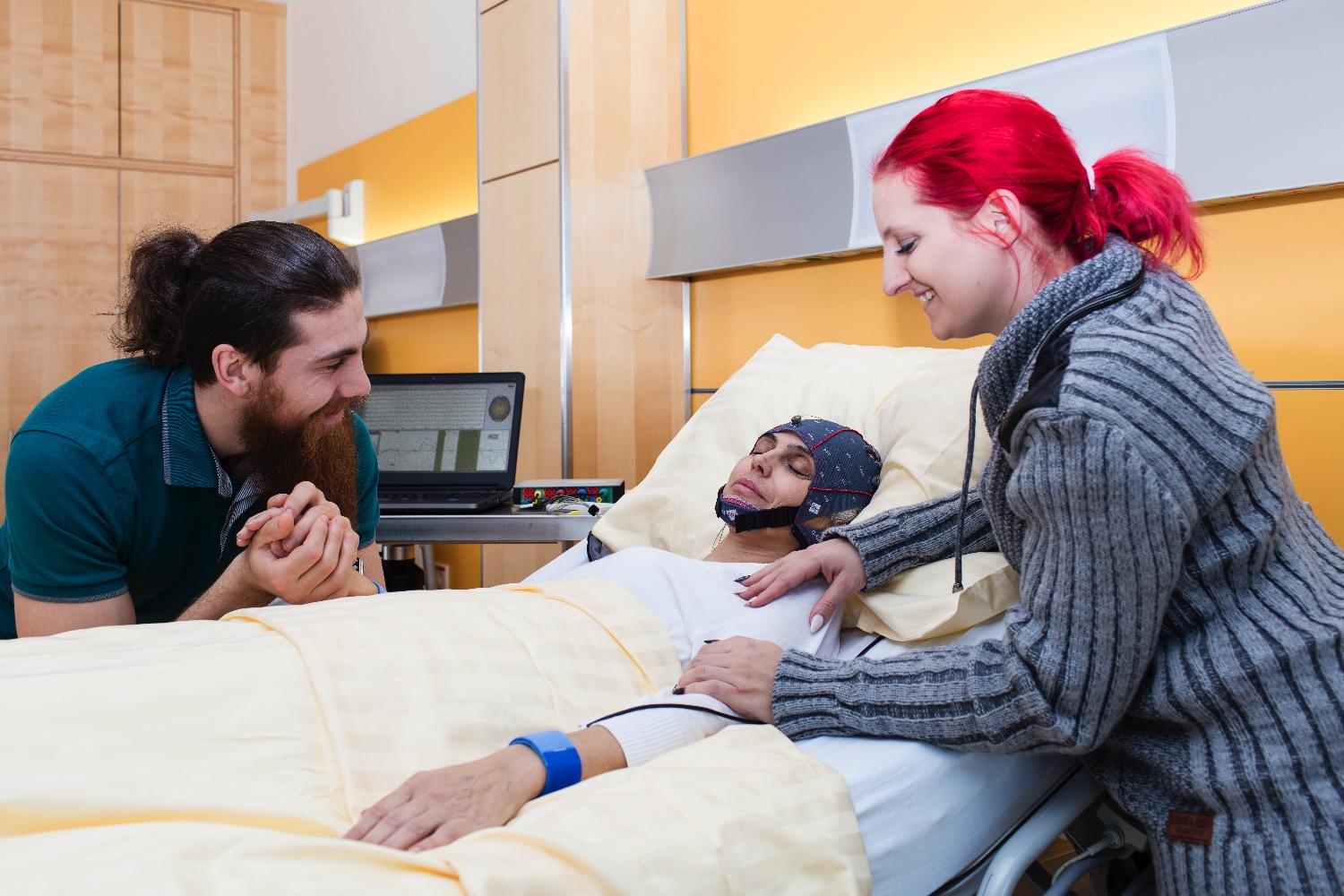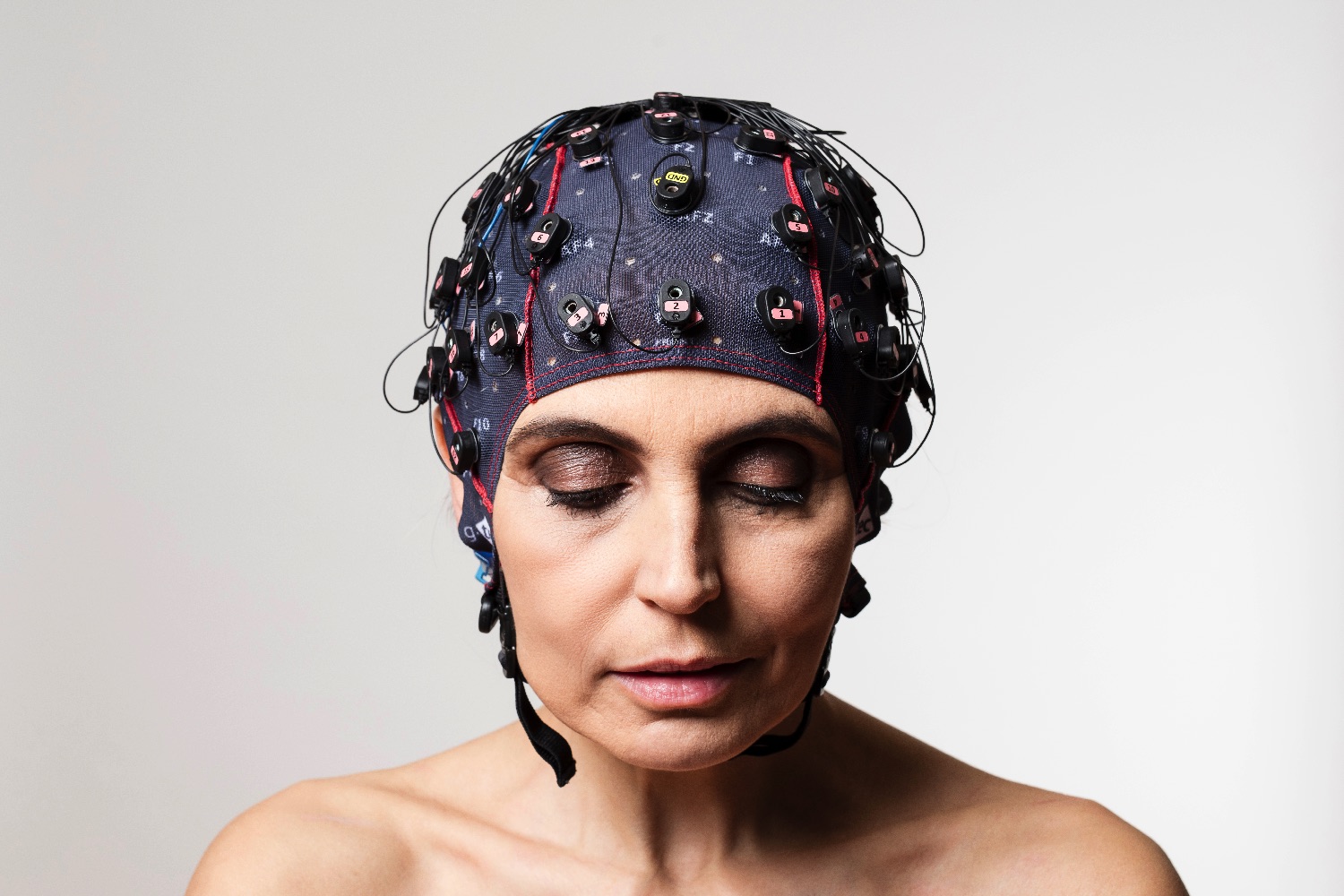Fortunately, an Austrian company is stepping up to the challenge, with the creation of an innovative brain-computer interface system called MindBeagle. The technology allows locked-in patients to communicate answers to “yes” or “no” questions using nothing more than their thoughts.
“The MindBeagle system uses brain waves from patients as an input signal,” Christoph Guger, CEO of g.tec, the company behind the technology, told Digital Trends.
Guger explained that this brain activity is detected using electroencephalography (EEG) technology, in which electrodes are attached to the scalp of a subject. Machine-learning algorithms then analyze these brain waves to work out “yes” and “no” patterns, based on a test the subjects are given. This involves a hand-vibration motor, which is worn on the patient’s hands. By responding to whether a vibration takes place on their left or right, users can establish separate measures for affirmative or negative answers.
Using the system, patients with locked-in syndrome are able to communicate with around 80 percent accuracy.
In addition to people with locked-in syndrome, the technology can also be used to help people in other unresponsive states, so long as there is cognitive activity.
“Imagine that somebody had a car accident and you want to see if he or she understands you,” Guger continued. “In that situation, you can use MindBeagle for testing. Recently the ALS Clinic in Palermo, Italy, had a patient who had gone for several months without showing any response. Using MindBeagle, the patient answered most of the questions they were asked correctly. The family was very happy to have a proof that their mother is still following all their conversations. The test results also make a difference for the doctors because they can optimize medication or therapy.”
While researchers one day hope to achieve a cure for conditions such as locked-in syndrome, cutting-edge technology like this is helping in ways that would have been impossible just a few years ago.
Editors' Recommendations
- New Level smart lock may be the smallest ever made, but it has tons of features
- This wild new gaming headset scans your brainwaves to find your weaknesses
- His granddad lost the ability to read, so he built a DIY text-to-speech rig
- Staggering implications: Smartphones may soon use our gait to see if we’re drunk
- Researchers have found a new way to spot the latest deepfakes







